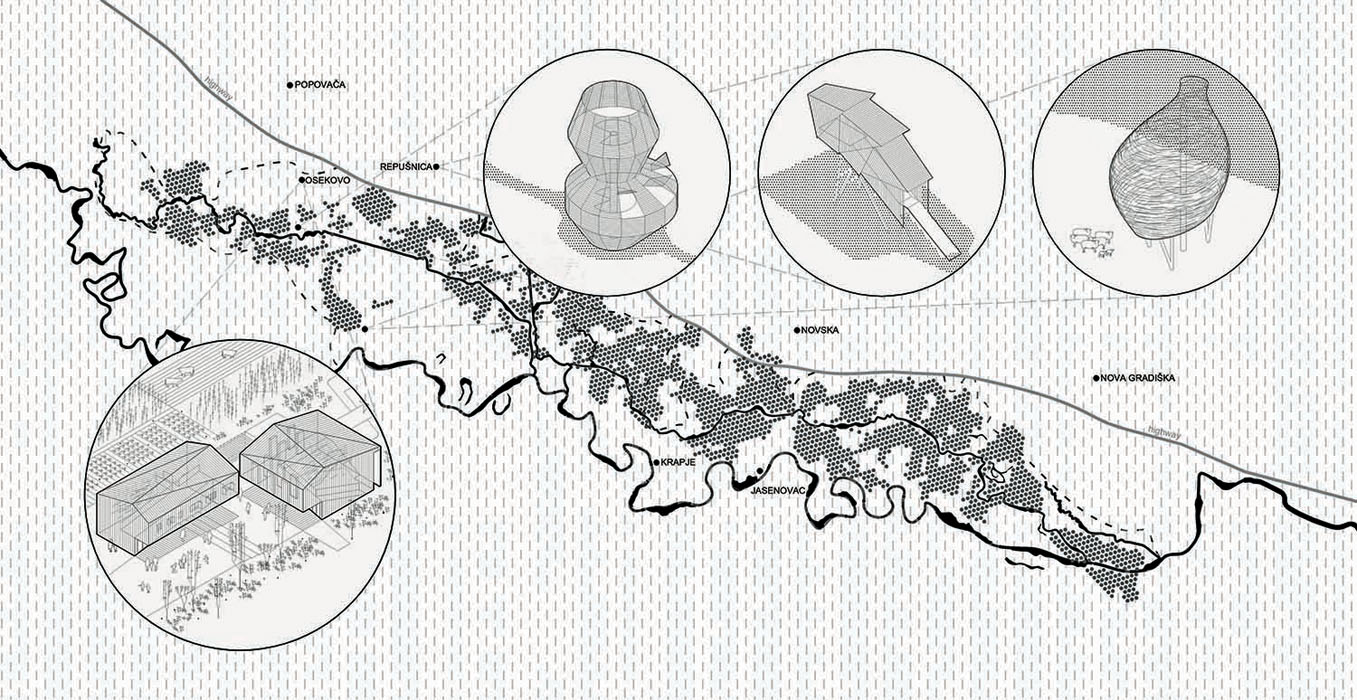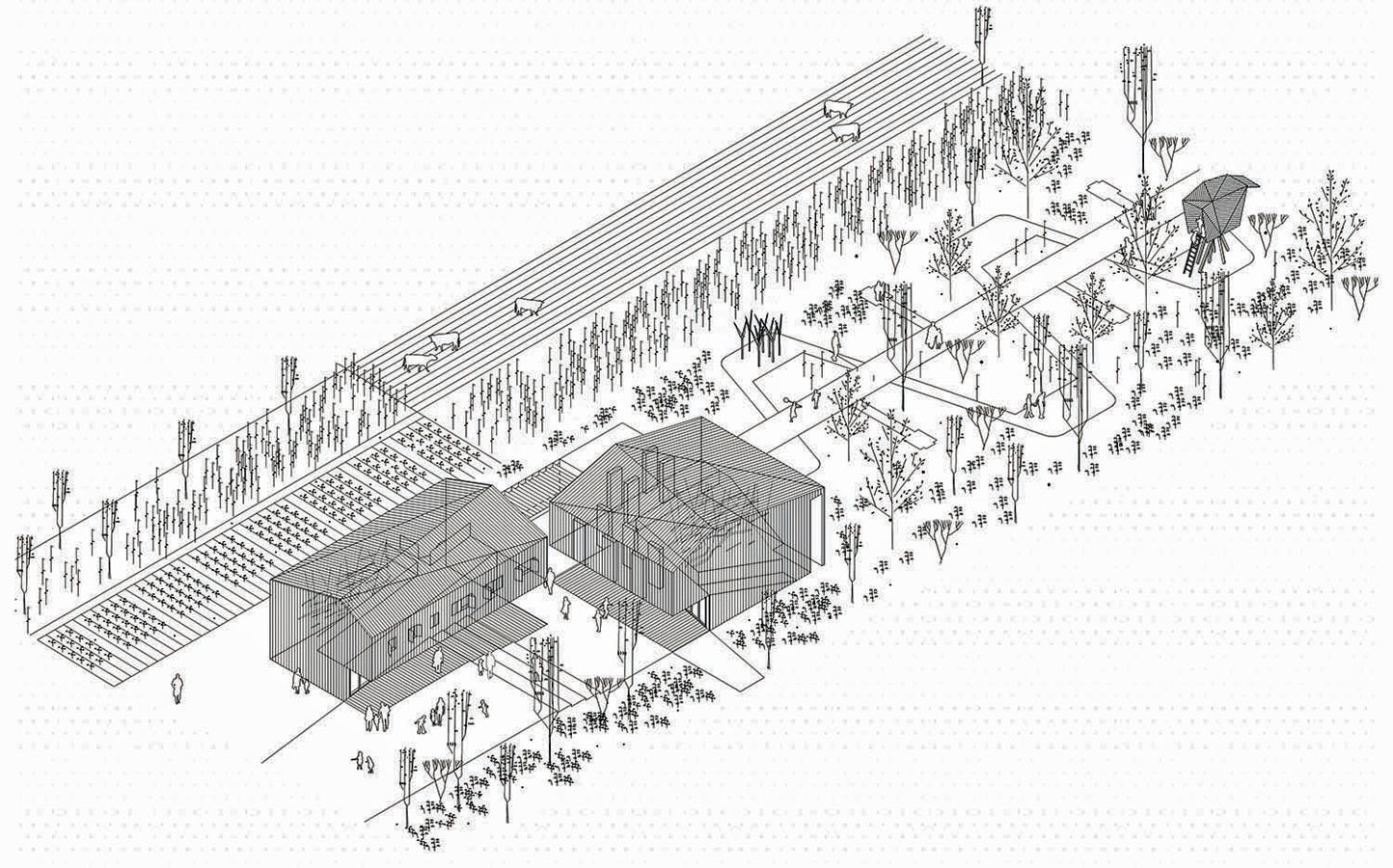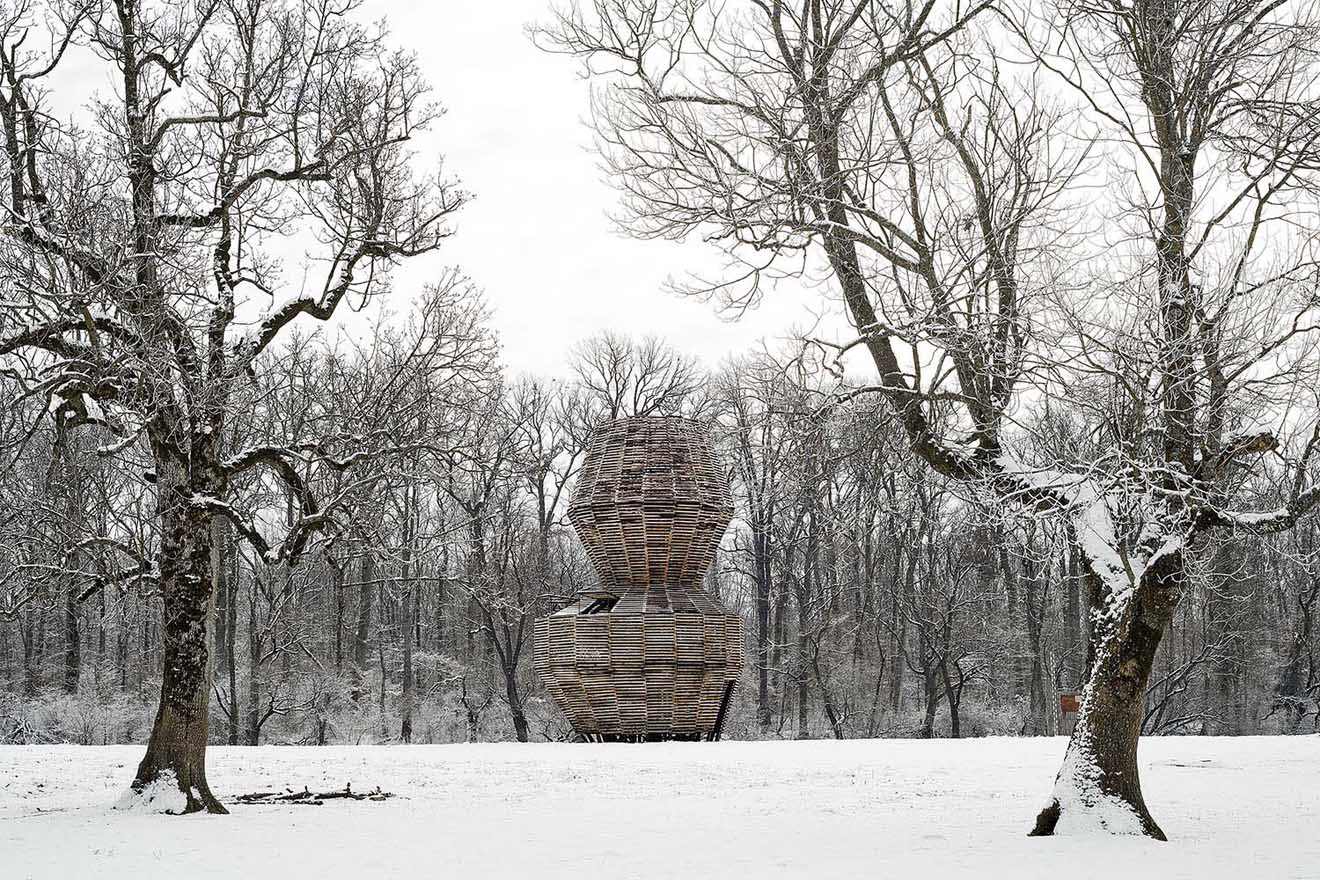Exploring the unique protected landscape of Lonjsko polje, one of Europe’s largest wetlands, is planned through a network of entry-points, visitor centres and observatories placed within the nature park. Lonjsko polje goes through radical changes over the course of a year – the rivers flood after winter, rendering the plains into a sequence of shallow liquid mirrors in which fish breed in spring. The retracting waters leave little swarming lakes – a feast for the many bird species. After the rivers return to their course, the vast grassy plains are the reign of livestock which roam freely. The many transient species move and travel through this untouched landscape: watching them in their natural element is a privilege which begins with a respectful dialogue of careful interventions.

Visitor centre and obseratory network.
The Osekovo visitor centre
The visitor centre in the village of Osekovo samples rural morphologies, creating a new social focus, and tells the stories of the flora, fauna and cultural heritage. It repeats the scales of surrounding rural morphologies, placing an info-point and administration in one house, an exhibition and auditorium in the other. The two buildings frame a communal square defined by deep trapezoid porticos and denivelations, initiating a focus of rural communal life.

Visitor centre, Osekovo. Photo: Marko Mihaljević.


The exhibition presents the unique, centuries old coexistence of wild and grown plants, birds, endemic domestic species, and a cultural heritage which grew from a symbiotic relationship of an everchanging landscape and communities synchronizing their way of life with it. This complex ecosystem is interpreted through a combination of analogue interactive exhibits, digitally told stories, sculptural fragments and tactile reliefs, condensing a varied sensorial introduction before embarking on a visit to the vast wetland.

Visitor centre, Osekovo. Photo: Marko Mihaljević.

The remote observatories of the Lonja wetlands
Touring the field is possible through a combination of village roads, bike routes, electric boats and hikes. In an effort to expose the radical changes the natural environment of Lonjsko polje goes through even closer, a network of observatories is planned as markers and vistas for viewing birds, free-range livestock, wildlife and waters.

Observatory, Osekovo. Photo: Marko Mihaljević.
The observatories of Lonjsko polje embody centuries of this cultivated landscape, of anthropogenic and natural symbioses, of a border condition. The verticals of past watchtowers placed along the divides of two empires, hunting box-stands and old observatories made up a distinct layer of this territory whose shapes and expressions communicated in their own distinct upright language.

Observatory, Osekovo. Photo: Marko Mihaljević.
In their own dialogue, free from direct references, they speak a unique language: from afar they seem like a part of the landscape, mythologized local beings, frozen in their movement. In a non-hierarchical environment these new points provide a fleeting identity, become gravitational sources, attractors and measuring devices.

Observatory, Čigoč. Photo: Marko Mihaljević.
They mark the territory as once the watchtowers used to do, but without the need for borders, enable a view of animals but without the hunt, make us participants of the landscape without being noticed. The immovable fantastic beings blur the borders between languages of the anthropogenic and the natural, peeking out in the distance as a new bestiarium.

Observatory, Čigoč. Photo: Marko Mihaljević.








